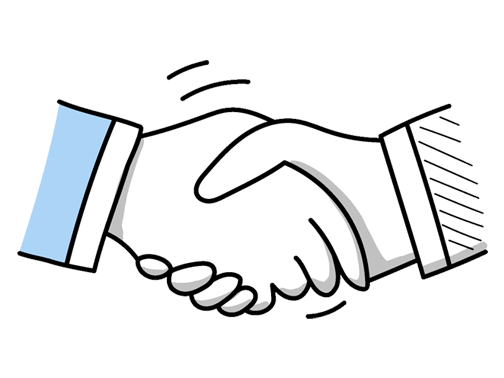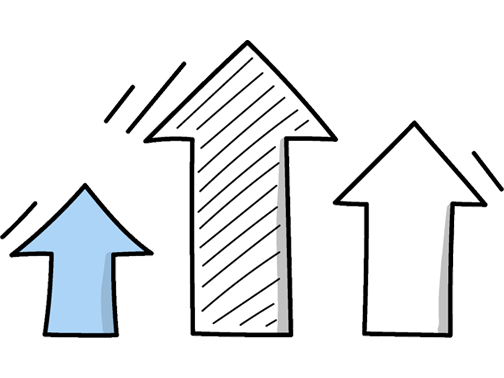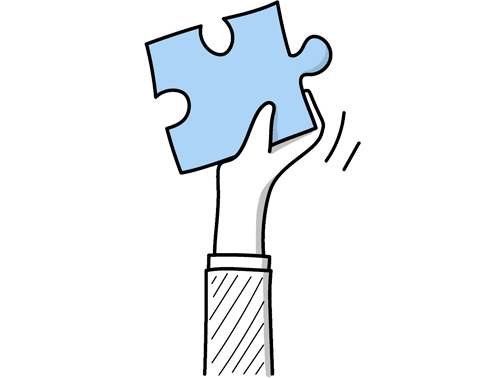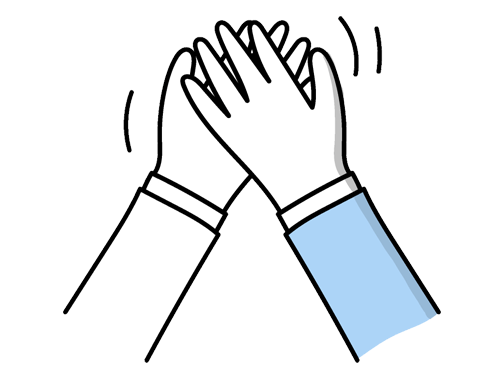Assistant Video Editor Interview Questions (2025 Guide)
Find out common Assistant Video Editor questions, how to answer, and tips for your next job interview
Practice Interviews Online - Identify your strengths and weakness in a realistic Assistant Video Editor mock interview, under 10 minutes
Practice Now »Assistant Video Editor Interview Questions
Interviewers ask this question to understand your range of experience and how adaptable you are to different types of video projects. You should briefly describe the kinds of projects you've worked on, your specific editing tasks, and how you’ve adapted to various styles or formats.
Example: I’ve worked on a range of projects, from short promotional videos and social media clips to longer-form documentaries. My role often involved assembling rough cuts, syncing audio, and adding graphics, adapting my approach to fit each style. For example, editing fast-paced marketing content required energetic pacing, while documentaries needed a more thoughtful, narrative-driven flow. Each project taught me to stay flexible and attentive to the story being told.
Interviewers ask this to see how you handle pressure and manage time effectively. In your answer, briefly describe the project, explain the strategies you used to stay organized, and highlight how you successfully met the deadline.
Example: Sure! Here’s a natural, polished response:
In a previous role, I was tasked with editing a short promo video on very short notice. With only a day to deliver, I prioritized key shots and streamlined the edits to maintain quality without overcomplicating the timeline. It was intense, but focusing on clear communication and efficient workflow helped me meet the deadline while keeping the final product engaging.
Hiring managers ask this to see if you can communicate effectively and maintain a positive workflow under pressure. You need to say that you stay calm, listen to all sides, and work collaboratively to find a solution that benefits the team.
Example: When disagreements arise, I focus on listening carefully to everyone’s perspective to understand the root of the issue. In a previous project, this helped us find common ground quickly, avoiding delays. I believe staying calm and open-minded encourages positive communication, which is crucial in a creative environment like video editing. It’s about turning differences into opportunities for better ideas and stronger teamwork.
Hiring managers ask this to see if you have an organized method and understand the story’s needs. You should explain how you sort clips by quality and relevance, choose footage that supports the narrative, and collaborate with the creative team for feedback.
Example: When selecting footage, I start by watching everything carefully to understand what’s available. I look for clips that truly capture the project’s tone and narrative, focusing on emotion and clarity. Throughout, I stay in close touch with the director or editor to ensure our vision aligns. For example, on a recent project, checking in regularly helped us spot a powerful but overlooked shot that became a key moment in the final edit.
Employers ask this question to see if you understand how editing shapes a story and if you can work well with others to bring a vision to life. You need to say that you focus on sequencing clips to create emotion and tension, collaborate closely with directors to refine the story, and adapt your edits when faced with challenges like limited footage.
Example: When editing, I focus on the story’s rhythm—making sure each cut helps the narrative unfold clearly and engagingly. I work closely with directors to understand their vision, staying flexible to tweak things if the footage or pacing needs adjusting. Once, shifting a scene’s order boosted emotional impact significantly, showing how being open to changes can really enhance the final piece.
What they want to know is how you think creatively and solve problems during editing. You need to describe a specific instance where you used creativity to overcome a challenge or improve the video’s impact effectively.
Example: In a recent project, we faced tight deadlines with limited footage. I creatively used motion graphics to fill gaps and enhance storytelling, which kept the pace engaging without overusing stock clips. This approach not only maintained visual interest but also gave the piece a unique style that resonated well with the client. It was a practical way to add depth without compromising quality or time.
Interviewers ask this to assess your attention to detail and technical skill in producing seamless edits. You should explain that you use visual markers like waveforms and clapperboards, consistently check sync manually, and rely on software tools to maintain precise alignment.
Example: To keep audio and video in sync, I typically start by checking the waveform patterns closely and aligning key audio peaks with the corresponding visual cues. Using timecode or markers helps, especially when working with multiple clips. I also rely on playback to catch any drift early on. For example, during a recent project, syncing dialogue with lip movements was smoother by combining visual lip cues with the audio peaks.
This question aims to assess your technical skills and artistic sense in enhancing video visuals. You need to explain your familiarity with color correction tools and how you use grading to set the mood or tone of a project.
Example: In my previous role, I worked closely with the lead editor to adjust color tones and enhance the overall mood of footage. I’m familiar with tools like DaVinci Resolve and Premiere Pro’s Lumetri panel, which I used to balance exposure and skin tones. For one project, subtle grading helped give a documentary a warm, natural feel, which really supported the storytelling without drawing attention to the edits themselves.
Questions like this assess your ability to handle complex projects efficiently and keep content accessible. You need to explain using clear, consistent naming conventions and software tools for metadata and tagging, plus regular backups to ensure smooth workflow and protect your work.
Example: When dealing with large volumes of footage, I start by creating clear folders and naming files consistently, making everything easy to locate. I rely on software like Adobe Premiere’s bins and metadata tagging to keep things searchable. Keeping a detailed log helps me track clips and versions, which speeds up the editing process. This approach keeps the workflow smooth, especially when deadlines are tight or projects are complex.
This interview question is designed to see how you manage time and stay organized under pressure. You need to explain that you create schedules or to-do lists, prioritize tasks by urgency and deadlines, and communicate regularly with your team to keep everyone informed.
Example: When juggling several projects, I first map out each deadline and break down tasks by how soon they need finishing. This helps me focus on what’s time-sensitive while making steady progress on longer-term jobs. I keep communication open with the team to adjust priorities if something urgent comes up. For example, if a client changes their brief last minute, I’ll re-assess and let everyone know the updated plan to keep things running smoothly.
This interview question helps the interviewer understand how organized and efficient you are when approaching video editing tasks. You need to explain your step-by-step process, from importing and organizing footage to rough cuts, fine-tuning edits, adding effects, and final review, showing your attention to detail and workflow management.
Example: Sure! I usually start by reviewing the footage to get a feel for the story. Then, I organize clips into bins to keep everything accessible. From there, I create a rough cut to shape the narrative, followed by fine-tuning the edit with transitions and effects. I often check with the team for feedback along the way, ensuring the final video flows smoothly and meets the project’s goals.
What they want to understand is how you handle pressure and solve problems creatively in editing projects. You need to briefly explain a specific challenge you faced and clearly describe the steps you took to fix it, showing your problem-solving skills and adaptability.
Example: During a project with tight deadlines, I encountered footage with inconsistent lighting, making the edits look disjointed. To fix this, I carefully adjusted color grading scene by scene to create a cohesive look. It took extra time, but the end result felt seamless. This experience taught me the importance of patience and attention to detail when technical issues arise unexpectedly.
Questions like this assess your ability to work collaboratively and improve your work based on others' input. You need to say that you listen carefully to feedback without interrupting, respond professionally, and make changes promptly to deliver the best results.
Example: I see feedback as a valuable chance to grow. When someone points out areas to improve, I listen carefully and consider their perspective before making adjustments. In a previous role, a client suggested a different pacing for a video, and by embracing their input, the final edit worked much better. Staying respectful and open helps keep the process collaborative and positive.
This question evaluates your flexibility and problem-solving skills under pressure, which are crucial in fast-paced editing environments. You need to say that you stay calm, prioritize tasks quickly, and communicate effectively to meet deadlines despite changes.
Example: When last-minute changes pop up, I stay calm and assess what’s needed quickly. In one project, a client needed a new cut just hours before deadline. I focused on prioritising the key edits, communicated clearly with the team, and managed to deliver on time without compromising quality. Flexibility and keeping a clear head really help when schedules shift unexpectedly.
This interview question helps employers understand your technical skills and how quickly you can adapt to their workflow. You need to clearly state the software you know best and briefly mention your experience or comfort level using it.
Example: I’m most comfortable working with Adobe Premiere Pro, as I’ve used it extensively for various projects, from short promotional videos to longer edits. I also have experience with Final Cut Pro, which I find great for quicker turnarounds. Both programs have their strengths, and I enjoy adapting my workflow depending on the project’s needs to deliver the best possible result.
This question helps the interviewer understand your teamwork style and how you contribute to collaborative projects. You should say that you support others by organizing and preparing footage efficiently, while communicating clearly to help the team meet deadlines smoothly.
Example: I usually take on the role of a collaborator who keeps things organized and on track. I’m comfortable jumping in wherever needed, whether that’s fine-tuning edits or coordinating with the team to meet deadlines. For example, in my last project, I helped streamline communication between the editor and graphic designers, which made the process smoother and faster. I find that being adaptable and attentive really helps the whole team succeed.
Questions like this assess your technical knowledge and practical skills handling various video formats and codecs, which is crucial for smooth editing and final output quality. You should mention your experience working with common file types like .mp4, .mov, and .avi, explain how you select formats based on project requirements, and highlight your awareness of compatibility issues with different editing software.
Example: I’ve worked with a variety of video formats like MP4, MOV, and AVI, and I’m comfortable handling codecs such as H.264 and ProRes. I always consider the project’s delivery requirements—whether it’s web, broadcast, or archival—to select the right format that balances quality and file size. Understanding compatibility helps me avoid playback issues and ensures smooth collaboration across different editing platforms.
This question checks if you have the technical skills and experience needed to enhance video projects with motion graphics and effects. You should mention the specific tools you use, like Adobe After Effects or Cinema 4D, and briefly describe how you've applied them, such as creating animated title sequences or other visuals.
Example: Yes, I’ve worked with After Effects and Adobe Premiere to create smooth transitions and simple motion graphics, like animated lower thirds and title sequences. In previous projects, I enhanced visuals with subtle effects to keep viewers engaged. I’m always keen to pick up new techniques and tools that can improve the storytelling through visuals, so I’m open to exploring whatever software the team prefers.
Hiring managers ask this to assess your teamwork and communication skills, which are crucial in a collaborative editing environment. You should explain a specific example where you worked closely with others to achieve a shared goal, highlighting how you contributed and coordinated effectively.
Example: In a recent project, I worked closely with a team of editors to meet a tight deadline. We divided tasks based on our strengths and kept communication open to ensure consistency in style. When unexpected changes arose, we quickly adjusted plans together. This collaborative approach helped us deliver a polished final product efficiently and strengthened our working relationships.
Interviewers want to see how you manage challenges like repeated changes while keeping the project on track and maintaining good teamwork. In your answer, explain how you adapted your editing process to efficiently incorporate feedback, communicated clearly with everyone involved, and managed your time to meet deadlines despite multiple revisions.
Example: Yes, I worked on a short film where the director requested multiple rounds of changes, sometimes late in the process. I stayed patient and kept an open line of communication to understand exactly what they wanted. By organizing my time carefully and breaking down the feedback into manageable tasks, I was able to deliver each revision on schedule without compromising quality. It became a great lesson in adaptability and teamwork.
Employers ask this to see if you are proactive about improving your skills and staying current in a fast-changing field. You should say that you regularly follow industry blogs or YouTube channels and apply new techniques in your recent projects to continually enhance your editing abilities.
Example: I keep up with the latest in video editing by regularly trying out new software features and experimenting with fresh techniques in my own projects. I also follow industry blogs and join online forums where creatives share tips and trends. Recently, exploring colour grading tutorials helped me improve a short film I worked on, which made the final edit much more dynamic. Staying curious and connected really keeps my skills sharp.
Employers ask this question to understand your practical experience and how you handle real projects from start to finish. You need to clearly describe the project's goals, your specific editing role and tools used, and explain why the outcome was successful or meaningful to you.
Example: One project I’m proud of involved editing a short documentary under tight deadlines. I was responsible for assembling rough cuts and refining the narrative flow, which was challenging due to varied footage quality. Seeing how the final video effectively conveyed the story and received positive feedback made the effort worthwhile. It taught me a lot about pacing and collaboration in fast-paced environments.
Hiring managers ask this to see if you can interpret and execute creative guidance effectively. You need to say that you actively communicate with the director to understand their vision and regularly review edits to ensure they match the intended style and tone.
Example: I make sure to really listen during discussions with the director, asking questions to clarify their vision. I review any reference materials they share and stay open to feedback throughout the process. For example, on a recent project, I adjusted pacing after their notes, which helped capture the tone they wanted. Keeping communication clear ensures the final edit feels true to their intentions.
Interviewers ask this to see if you can keep the team informed and working well together. You should say you communicate openly with regular updates, listen to others’ ideas, and use shared tools to stay coordinated.
Example: I believe keeping everyone on the same page starts with being open and approachable, so team members feel comfortable sharing ideas or concerns. I make it a point to listen carefully and consider everyone’s input. Using tools like shared project files or messaging apps helps keep progress visible to all. For example, in my last role, regular check-ins and clear updates helped us meet tight deadlines smoothly.
This interview question helps the employer understand how you troubleshoot problems and stay productive under pressure. You should say that you first identify the issue, try basic fixes like restarting the software, then consult help resources or ask a teammate if needed.
Example: When I run into technical issues with editing software, I first stay calm and try to identify the problem by checking error messages or unusual behavior. If it’s a quick fix, like a frozen screen, I might restart the program or my computer. Otherwise, I look up solutions online or consult forums. At a previous role, this approach helped me resolve a plugin conflict without missing deadlines.
Ace your next Assistant Video Editor interview with even more questions and answers
Common Interview Questions To Expect
The interviewer is looking for your passion for the role, understanding of the responsibilities, alignment with company values, and how your skills and experience make you a good fit.
Example: I've always had a passion for video editing and I love the creative process of bringing a story to life through visuals. I'm excited about the opportunity to work with a talented team and contribute to creating high-quality content. My experience in editing software and attention to detail make me confident that I can excel in this role.
The interviewer is looking for a candidate to demonstrate their skills, experience, passion for the role, and how they align with the company's values and goals. Candidates can answer by highlighting their relevant experience, technical skills, creativity, attention to detail, ability to work well in a team, and enthusiasm for the industry.
Example: You should hire me for this position because I have a strong background in video editing, with experience using industry-standard software and a keen eye for detail. I am also a team player and always strive to bring creativity and passion to my work. I believe my skills and enthusiasm align well with the goals of your company.
The interviewer is looking for you to highlight your key skills and qualities that make you a strong candidate for the position. You can answer by discussing your technical skills, creativity, attention to detail, teamwork abilities, or any other relevant strengths.
Example: I would say my biggest strengths are my attention to detail, creativity, and ability to work well in a team. I have a keen eye for editing and making sure everything looks polished, I love coming up with new ideas and approaches to projects, and I thrive in collaborative environments where we can bounce ideas off each other.
The interviewer is looking for your long-term career goals and aspirations. You can answer by discussing your desire for growth within the company, furthering your skills, or taking on more responsibilities.
Example: In five years, I see myself continuing to grow and develop as an Assistant Video Editor within this company. I hope to take on more responsibilities and further enhance my skills in video editing. Ultimately, my goal is to become a Senior Video Editor and make a significant impact in the industry.
The interviewer is looking for how you handle constructive criticism, your ability to learn from feedback, and how you have improved as a result. Be honest and show growth.
Example: Sure! In my previous role, I received feedback on a video edit I had completed. The client felt that the pacing was too slow and suggested some changes. I took the feedback on board, made the necessary adjustments, and the final product was much more engaging.
Company Research Tips
The company's official website is a goldmine of information. Look for details about the company's history, mission, vision, and values. Pay special attention to their 'About Us', 'Our Team', and 'News' or 'Blog' sections. These can provide insights into the company culture, recent achievements, and future goals. For the Assistant Video Editor role, also check their portfolio or any video-related work they have published.
Tip: Look for any specific video styles or editing techniques they seem to prefer. This can give you an idea of what skills or experiences to highlight during your interview.
Social media platforms can provide a more informal view of the company. LinkedIn can provide information about the company's size, industry, and employee roles. Twitter, Instagram, and Facebook can give insights into the company's public image, customer engagement, and marketing strategies. YouTube can be particularly useful for an Assistant Video Editor role, as it may contain examples of the company's video work.
Tip: Pay attention to the comments and reviews on their social media posts. This can give you an idea of how well their content is received, which can be useful information for your interview.
Stay updated with the latest news and trends in the video editing industry. This can help you understand the market context in which the company operates. Look for any news articles or press releases about the company. This can provide information about their recent activities, partnerships, or product launches.
Tip: Use this information to show that you are knowledgeable about the industry and can bring fresh ideas to the table. This can make you stand out from other candidates.
Understanding the company's competitors can give you insights into their unique selling points and the challenges they face. Look for information about the competitors' products, services, and marketing strategies. This can help you understand what sets the company apart from its competitors.
Tip: Use this information to show that you understand the company's position in the market and can contribute to their competitive advantage.
What to wear to an Assistant Video Editor interview
- Smart casual attire
- Clean, well-fitted jeans
- Button-down shirt or blouse
- Comfortable, clean shoes
- Avoid flashy colours or patterns
- Light makeup and minimal accessories
- Neat, professional hairstyle
- Carry a neat, organised portfolio
- Avoid strong perfumes or colognes
- Ensure clothes are ironed and clean





